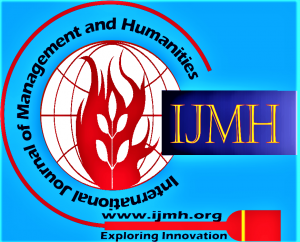![]()
Intersectionality and Feminism in the Indian Context
Lakshita Singh
Lakshita Singh, Student, Department of History, 602, Sheoran Residency, Avantika, Ghaziabad (Uttar Pradesh), India.
Manuscript received on 03 October 2025 | Revised Manuscript received on 25 October 2025 | Manuscript Accepted on 15 November 2025 | Manuscript published on 30 November 2025 | PP: 34-42 | Volume-12 Issue-3 November 2025 | Retrieval Number: 100.1/ijmh.B121805021225 | DOI: 10.35940/ijmh.B1218.12031125
Open Access | Editorial and Publishing Policies | Cite | Zenodo | OJS | Indexing and Abstracting
© The Authors. Blue Eyes Intelligence Engineering and Sciences Publication (BEIESP). This is an open access article under the CC-BY-NC-ND license (http://creativecommons.org/licenses/by-nc-nd/4.0/)
Abstract: The concept of intersectionality changes our understanding of feminism by examining how social identities, including caste, gender, class, and religion, intersect to shape the experiences of women from different communities. When the term was introduced in 1991, intersectionality exposed many gaps in the traditional concept of feminism, which always favoured white feminist ideology, highlighting the need to engage with multiple, interlocked systems of oppression faced by different women’s communities. Within the Indian context, the caste system plays a vital role in deepening the already existing gender inequality, which white feminist scholars have often ignored. This paper critically examines the experiences of Dalit feminism in India in relation to Black feminism in the United States, exploring their distinct historical experiences while also analysing how the intersection of various factors oppresses both communities, and the collective efforts to resist this system of oppression. The fact that intersection not only applies to feminism but also to the masculine studies. Looking at various case studies, such as the 2014 Badaun case and the horrific example of Anannyah Kumari Alex (a transgender woman), these studies reflect how violence operates as a result of increasing social exclusion. It also studies the sidelining of transgender people and non-binary individuals from mainstream feminist discourse, advocating for greater inclusivity as necessary for feminism to achieve greater equality within its own framework. This paper underscores the need to bring forward the marginalised voices, particularly the Dalit women, transgender individuals and other minorities, if “feminism” is to realise its full potential inclusively.
Keywords: Intersectionality, Dalit Feminism, Transgender Rights, Caste Oppression, Women’s Empowerment, Gender Justice, Indian Feminism.
Scope of the Article: History
